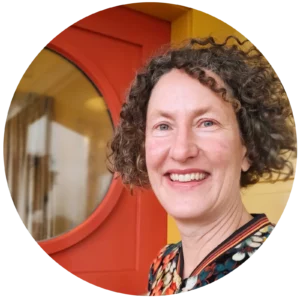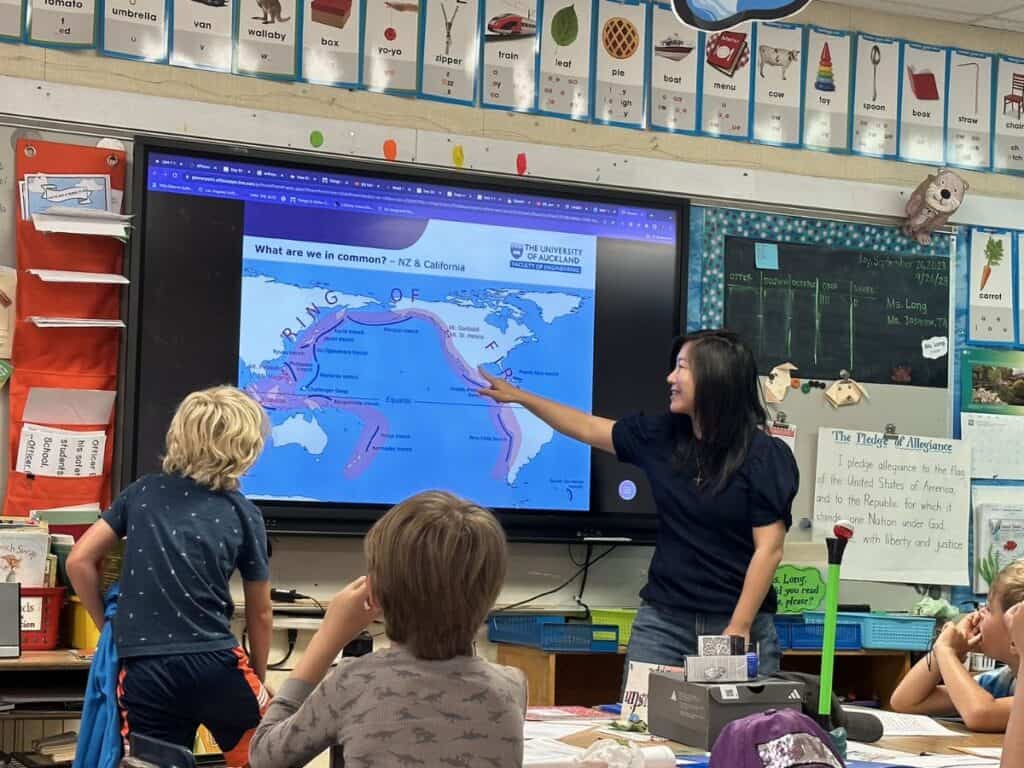Imagine the recovery from the Christchurch Earthquake if we’d been able to reoccupy or repair commercial buildings instead of demolishing over a thousand of them.
Californian Anniversary
Thirty years ago, as highways collapsed, buildings toppled, and fire broke out around them, thousands of Californians were injured and 60 people died – all as a result of the Mw 6.7 Northridge Earthquake. On the 17th of January 2024 Alice Chang-Richards, of Waipapa Taumata Rau University of Auckland, was in Los Angeles to mark the anniversary.
Alice received a Fulbright New Zealand Scholar Award in 2023 for which she was hosted by Henry Burton at the University of California Los Angeles (UCLA). The Fulbright project was to examine and simulate building recovery trajectories following the 1994 earthquake that registers as one of the costliest natural disasters in American history.
With Christchurch only 13 years post-quake, Alice is keen to see what insights can be gained from a city that is 30 years on from a major destructive event.
California is thinking along similar lines to New Zealand. They’re in the process of moving the focus of building codes beyond providing life safety to enabling functional recovery for buildings. Alice had the opportunity to be a corresponding member of a Functional Recovery Task Committee run by FEMA’s National Earthquake Hazards Reduction Program to learn about the seismic codification process in America.
What Does Aotearoa Want?
Aotearoa New Zealand’s building code has, understandably, had a strong emphasis on structural standards that safeguard people from injury and death. But there are additional aspirations that would help our seismically active country avoid being knocked back every time the crust tears beneath our feet.
Imagine the recovery from the 2011 Christchurch Earthquake if, instead of demolishing over a thousand commercial buildings, we’d been able to immediately reuse or repair most of them. A quick recovery for buildings would mean a quick recovery for businesses and a huge reduction in the social, economic, and environmental toll of earthquakes.
But what level of building performance is appropriate? What timeframes for restoring function do we want? And how should these factors be integrated into the building code? Research to help answer these questions is underway as part of Te Hiranga Rū QuakeCoRE’s Interdisciplinary Programme 1, which Alice co-leads with Geoff Rodgers of Te Whare Wānanga o Waitaha University of Canterbury.
“From a socio-economic perspective we’re thinking about how we can reduce the cost of earthquakes by limiting business disruption. If buildings and businesses can have a quick recovery, then that helps to minimise wider impacts on society.”
Recovery Bottlenecks
Case studies from Northridge and Christchurch have illustrated how intertwined business disruption is with community recovery. Getting businesses back into buildings is crucial for community sustainability. But there are many interdependencies that can lead to bottlenecks in recovery.
“The vulnerability or resilience of one building affects that of nearby buildings so, if we can model a network of buildings, we can be more strategic about how we recover and thereby minimise disruption”, says Alice.
In collaboration with UCLA, Alice is building an agent-based model that she will present at the 18th World Conference on Earthquake Engineering in Milan in mid-2024. The model aims to simulate decision making for post-earthquake recovery.
Rather than modelling recovery of individual buildings, modelling a whole portfolio of buildings will enable pathways for minimising business disruption and cost to be explored. Like pinpointing hotspots in a transportation network, identifying interdependent spatial effects of buildings will enable recovery bottlenecks to be alleviated. There is efficiency to be gained from optimising recovery at a system level.
Short Term Memories
The Noto earthquake in Japan and the Hualien City earthquake in Taiwan are timely reminders of the seismic risks we face.
Alice uses Dory, the happy-go-lucky regal blue tang fish in the Disney animation Finding Nemo – a character who suffers from short-term memory loss – to emphasise the importance of marking earthquake anniversaries and learning from past events to inform a better future.
“We need to be ready for Alpine Fault and Hikurangi Subduction Zone earthquakes and there is still much to learn from past events, nationally and internationally”.

